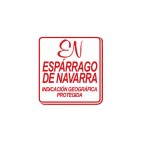Extra-thick Asparagus (4 fruit, 1 kg)
- Remove this product from my favorite's list.
- Add this product to my list of favorites.
- Send to a friend
Extra-thick Asparagus (4 fruit, 1 kg)
From the market garden area of La Ribera de Navarra, over three generations the Cayo family has harvested and produced artisan vegetables canned, synonymous with the most discerning gourmets.
By buying this product you can collect up to 3 loyalty points. Your cart will total 3 points that can be converted into a voucher of 3,00 €.






























Why in GourmetVip - Conservas La Catedral
No customer comments for the moment.